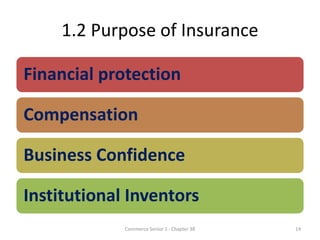Little Known Questions About Pacific Prime.
Table of ContentsPacific Prime Can Be Fun For EveryoneThe Ultimate Guide To Pacific PrimeWhat Does Pacific Prime Do?Some Known Factual Statements About Pacific Prime Top Guidelines Of Pacific Prime

This is since the data were collected for a duration of strong economic performance. Of the estimated 42 million individuals that were without insurance, all yet regarding 420,000 (concerning 1 percent) were under 65 years of age, the age at which most Americans become eligible for Medicare; 32 million were grownups between ages 18 and 65, about 19 percent of all grownups in this age; and 10 million were kids under 18 years old, about 13.9 percent of all kids (Mills, 2000).
These quotes of the number of individuals without insurance are generated from the annual March Supplement to the Current Population Study (CPS), carried out by the Demographics Bureau. Unless otherwise noted, nationwide estimates of people without health and wellness insurance and proportions of the population with different sort of protection are based upon the CPS, one of the most extensively made use of resource of quotes of insurance policy protection and uninsurance prices.
Pacific Prime Things To Know Before You Buy

Still, the CPS is particularly beneficial since it creates yearly quotes fairly quickly, reporting the previous year's insurance coverage estimates each September, and due to the fact that it is the basis for a constant set of price quotes for even more than 20 years, enabling analysis of fads in protection gradually. For these factors, in addition to the extensive usage of the CPS in other studies of insurance policy protection that exist in this report, we rely upon CPS estimates, with limitations noted.

The price quote of the number of uninsured individuals increases when a population's insurance coverage standing is tracked for a number of years. Over a three-year duration beginning early in 1993, 72 million people, 29 percent of the U.S. http://dugoutmugs01.unblog.fr/2024/04/02/pacific-prime-your-partner-for-comprehensive-insurance-solutions/. populace, lacked protection for a minimum of one month. Within a solitary year (1994 ), 53 million people experienced at the very least a month without protection (Bennefield, 1998a)
Six out of every 10 without insurance adults are themselves employed. Although functioning does improve the likelihood that one and one's member of the family will have insurance, it is not a warranty. Even participants of families with two permanent wage income earners have almost a one-in-ten possibility of being without insurance (9.1 percent without insurance price) (Hoffman and Pohl, 2000).
The 9-Minute Rule for Pacific Prime
New immigrants make up a significant percentage of people without health and wellness insurance. One analysis has connected a substantial portion of the recent growth in the size of the U.S. uninsured population to immigrants that arrived in the country in between 1994 and 1998 (Camarota and Edwards, 2000). Current immigrants (those that involved the United States within the previous four years) do have a high rate of being uninsured (46 percent), yet they and their youngsters account for just 6 percent of those without insurance policy across the country (Holahan et al., 2001).
The relationship between health and wellness insurance try here coverage and accessibility to care is well developed, as recorded later on in this phase. The relationship between health and wellness insurance policy and health and wellness results is neither direct neither straightforward, a substantial scientific and health and wellness services study literary works web links health insurance protection to improved accessibility to care, far better high quality, and improved individual and populace health standing.
Levels of evaluation for checking out the results of uninsurance. This discussion of medical insurance coverage focuses primarily on the united state population under age 65 due to the fact that virtually all Americans 65 and older have Medicare or various other public protection. It concentrates particularly on those without any kind of health and wellness insurance policy for any size of time.
Our Pacific Prime Ideas
The issues dealt with by the underinsured are in some respects comparable to those dealt with by the uninsured, although they are generally much less serious. Health insurance, nonetheless, is neither required neither adequate to gain accessibility to medical solutions. The independent and direct effect of health and wellness insurance protection on accessibility to health and wellness services is well developed.
Others will get the healthcare they require even without medical insurance, by paying for it expense or seeking it from companies who provide care cost-free or at highly subsidized prices. For still others, health insurance policy alone does not ensure invoice of treatment as a result of various other nonfinancial barriers, such as an absence of wellness care carriers in their community, restricted access to transport, illiteracy, or linguistic and cultural differences.
Unknown Facts About Pacific Prime
Official research concerning uninsured populations in the USA dates to the late 1920s and early 1930s when the Board on the Expense of Treatment produced a series of reports about financing doctor workplace visits and hospitalizations. This problem became prominent as the varieties of medically indigent climbed during the Great Depression.
 Kel Mitchell Then & Now!
Kel Mitchell Then & Now! Alicia Silverstone Then & Now!
Alicia Silverstone Then & Now! Molly Ringwald Then & Now!
Molly Ringwald Then & Now! Ashley Johnson Then & Now!
Ashley Johnson Then & Now! James Van Der Beek Then & Now!
James Van Der Beek Then & Now!